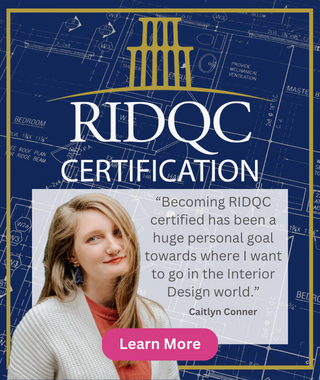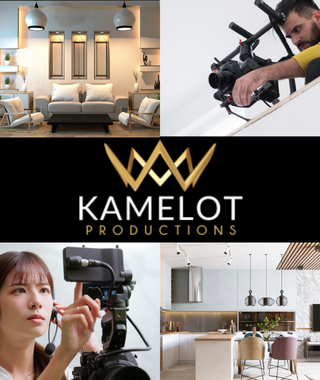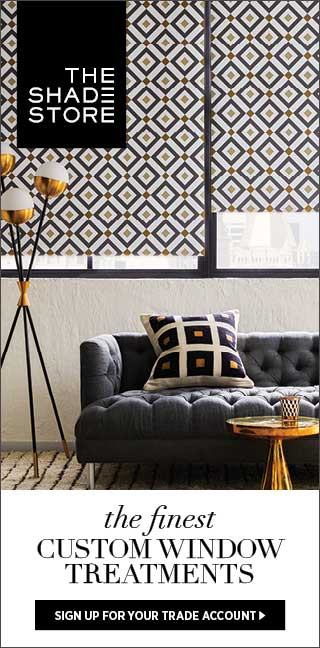DSA Newsletter - August 2009
Notes from Natasha
Make Your Portfolio Work for You!
When meeting a new client for the first time, your portfolio can make or break a deal, depending on how you use it to sell yourself and your design talents. Be sure your entire portfolio reflects your style and abilities, providing potential clients with a clear idea of the level of professional interior design services you are capable of providing.
Your portfolio should contain not only a showcase of your best work, but also be a collection of some of your finest designs and solutions from throughout your career. Of course, if you are a relative newcomer to the industry, your portfolio will be more limited than that of a veteran designer. Nevertheless, you can still create a portfolio that speaks straight to your talents and build on that base as your career progresses. Remember, your portfolio is an ever changing tool to be reinvented throughout the years as you take on more varied and difficult projects. Show them off! This is your opportunity to show a potential client who you are and what you are capable of creating for them.
Thanks to the progression of technology and the Internet, today's interior designer portfolios are not limited to the traditional portfolio cases or files filled with paper samples of the designer's work. Today's designers can amplify the impact of their portfolio by supplementing the paper samples with online photos, electronic images and even virtual tours of past projects. Designers can even create a portfolio section on their business website with updated project photos, before and after shots and even some "virtual designs" that they have yet to complete for an actual client.
How you decide to arrange the information in your portfolio is a personal choice, with some choosing to show a progression of difficulty in design work and others categorizing by design style or even type of room. Portfolios can give a general overview of your talent or offer in-depth information and detail of design elements used in a particular project. You can also use this opportunity to share testimonials from past satisfied clients.
Regardless of how you choose to arrange your work, it is crucial that the portfolio appear clean, organized and professional. After all, what client wants to hire a designer that presents an amateurish portfolio with messy loose, crumpled designs in no apparent order or theme? Your portfolio is often your first impression on a potential client, so make it a good one!
Have fun in the sun, but stay vigilant!
 Like you, I'm trying to catch at a few more beach days with my kids to recharge for a busy fall in which we will begin to see the avalanche of new 2010 legislation.
Like you, I'm trying to catch at a few more beach days with my kids to recharge for a busy fall in which we will begin to see the avalanche of new 2010 legislation.
Have you been keeping track of IDPC's progress this year in protecting designers' rights and livelihoods?
Our Spring/Summer newsletter is jam-packed with 2009 legislation and legal updates, as well as other useful industry information. As a member of DSA, one of your benefits is a free subscription to our newsletter. Click here and enjoy!
Patti Morrow
Executive Director
Interior Design Protection Council
Member Spotlight
 Mary Dennis - Graceful LifestylesHaving influenced both residential and commercial environments as a Feng Shui designer for the past 25 years, Mary Dennis has a keen sense of proper placement. Her visionary ideas and innate creativity bring the ancient art of Feng Shui and interior design to the world in ways that offer easy integration with Western approaches. Her most recent achievements include designing an environment for Corporate America, which received the ARDA (American Resort Development Association) award and Silver Certification from USGBC (United States Green Building Council).
Mary Dennis - Graceful LifestylesHaving influenced both residential and commercial environments as a Feng Shui designer for the past 25 years, Mary Dennis has a keen sense of proper placement. Her visionary ideas and innate creativity bring the ancient art of Feng Shui and interior design to the world in ways that offer easy integration with Western approaches. Her most recent achievements include designing an environment for Corporate America, which received the ARDA (American Resort Development Association) award and Silver Certification from USGBC (United States Green Building Council).
 As the Feng Shui designing partner, she continues to support wellbeing and sustainability through her Intentional Designs.
As the Feng Shui designing partner, she continues to support wellbeing and sustainability through her Intentional Designs.
Dennis' educational programs are based on creating healing, safe and sustainable environments. Her templates are used as foundations for new careers in the fields of Feng Shui ReDesign, Home Showcasing, The One Day Move In and Intentional Design in Corporate America.
With a background in design, education and holistic health, Dennis integrates contemporary design with order, harmony and the balance of energy to create a complete "Interior Attunement!" Dennis' work eliminates confusion and relieves the stress and frustration of the design of residential and commercial interiors.
Mary Dennis is the author of Feng Shui 101, The Fundamentals and creator of The Feng Shui 2000 Gift Collection. She is also the author of several published articles on Feng Shui residential design. Dennis is an educator of Feng Shui design, a professional design consultant, president of Feng Shui 2000 Inc. (1992), past president and board member of The International Feng Shui Guild and co-founder and executive director of Graceful Lifestyles.
For more information, visit gracefullifestyles.com
To Thyself Be True
One of the best traits about design professionals is also
one of the worst: The ability to create and design in different mediums
allows designers to enhance everything that they touch. Ideas flow like
water down a river of creativity, gathering into a pool of guilt. The
guilt stems from not taking action on a splendid concept for a new linen
design or an ergonomic chair for children, or perhaps a new use for
bamboo.
The reality is that while the ideas may be useful and unique, it
doesn't mean that they should distract a designer from their core
business of interiors. Licensing has captivated many people because of the allure of having one's name "in lights" and because of the perceived passive revenue stream.
While the occasional vanity surfaces, most people are looking to make
extra money through their visionary ideas. Unfortunately, it takes a
great deal of time and energy to have ideas translated into tangible
products that can be sold. And once created, it doesn't mean that anyone
will buy them.
This definitely is not a case of "build it and they will come." So
what do you do if you still want to try and get your fantastic idea to
the marketplace? Consider these steps to licensing and you might have a
chance.
- Do you have a name that is recognized by the public? If not, you
should find someone that does to co-brand with or consider just being a
behind the scenes designer.
- Create a story that will position the product and target to companies offering opportunity – money, brand building, PR.
- Find appropriate companies with which to license or develop products.
- Identify product opportunities with the right partner and then develop them.
- Negotiating the terms is crucial and best handled by an expert.
- The designer designs and the licensee is responsible for the
distribution and marketing. Without a plan in place for both, the
product is not going to get sold.
So, to thyself be true. Do you really have the time and patience to
see this new endeavor through? If you do and your interiors business can
afford to have your mind elsewhere for awhile, then consider the
crash-course in licensing you just had and engage a professional to help
you. If not, refocus your energies on interiors and reap the rewards
you will get from the extra attention you pay to it.
Thank you to Gregory Vargo Design Licensing for input on this article.
Lloyd Princeton
Design Management Company
(212) 777-5718
lloyd@dmcnyc.com
dmcnyc.com
NKBA Education Summer Sale

The National Kitchen & Bath Association (NKBA) has been the heart of the kitchen and bath industry for more than 45 years. With nearly 40,000 members, the NKBA's mission is to enhance member success and excellence, promote professionalism and ethical business practices and provide leadership and direction for the industry. Because of this, the NKBA is pleased to partner with the Designer Society of America by offering member pricing on all NKBA courses to DSA members. DSA members can also take advantage of our certifications and programs available at the Kitchen and Bath Industry Show (K/BIS).
In order to help you succeed, take advantage of the NKBA's Summer Sale pricing on in-person classes and recorded webinars. Beginning August 1, in-person class rates have been discounted up to $60 for most classes (some restrictions apply; click here for details).
Recorded webinars are reduced by 50% when purchasing a single 1-hour webinar, and quantity discounts are offered when purchasing more than one. Click here for details. For more information on the Summer Sale, visit NKBA.org or call Customer Service at 1-800-THE-NKBA (843-6522).
Miravel Spa , Waiting to exhale?

Interior Design retreat in October at the famous miravel spa inArizona. Enjoy free treatments all inclusive stay with your colleges. Feng Shui classes available, hiking, yoga, and free profit seminars.
You can have it all. Mind, Body, Spirit
more
To The Design Trade Only
 To The Design Trade only is a purchasing source for interior designers, small businesses, architects with an interior design department and home staging professionals. After 35 years in the retail interior design business, Mindy McVay Heilmann sold her business and established a venue for design professionals to purchase many lines of furnishings and home decor at a very low markup above cost.
To The Design Trade only is a purchasing source for interior designers, small businesses, architects with an interior design department and home staging professionals. After 35 years in the retail interior design business, Mindy McVay Heilmann sold her business and established a venue for design professionals to purchase many lines of furnishings and home decor at a very low markup above cost.
 During Heilmann's interior design career there were several occasions that desired wholesale sources were unavailable to small design firms. Many companies had minimum purchase requirements and local retail stores were the only option. To The Design Trade Only offers complimentary searches and pricing and has become a valuable asset to many firms within the United States, offering:
During Heilmann's interior design career there were several occasions that desired wholesale sources were unavailable to small design firms. Many companies had minimum purchase requirements and local retail stores were the only option. To The Design Trade Only offers complimentary searches and pricing and has become a valuable asset to many firms within the United States, offering:
- Furnishings
- Accessories & Lamps
- Wall Coverings
- Floor Coverings
- Window Coverings
We look forward to serving you and are committed to providing you with the very best sources and service for your clients. Start maximizing your profits today!
Mindy McVay Heilmann, ASID DSA
(843) 424-6701
tothedesigntradeonly.com
P.S. Please visit our new website: mainlymirrors.com We add new mirrors daily and we welcome suggestions for new additions
Appropriate Durability
 Considering durability in our selection of materials is a fundamental design practice. Usually, we match the level of use with the amount of needed durability for the desired useful life. A higher price tag usually comes along with durability. In this regard, when we need the durability, it becomes an investment. The upfront higher cost is returned in the value received for a longer useful life. In general terms, we consider higher durability to be synonymous with higher quality, and as long as we can afford it, we're willing to pay for it.
Considering durability in our selection of materials is a fundamental design practice. Usually, we match the level of use with the amount of needed durability for the desired useful life. A higher price tag usually comes along with durability. In this regard, when we need the durability, it becomes an investment. The upfront higher cost is returned in the value received for a longer useful life. In general terms, we consider higher durability to be synonymous with higher quality, and as long as we can afford it, we're willing to pay for it.
But, in design we don't just match necessary durability with functional needs. We often use durability standards as a minimum and ignore durability that may exceed functional needs.
 Granite countertops are a perfect example of this. The decision making process that allows us to use granite for kitchen counters is based on the old "bottom line" kind of thinking where only the upfront economic costs are considered. People who can afford it choose granite counters for personal preference or status seeking reasons, not because they need them to last hundreds of years. But, just as HVAC professionals are expected to right size heating and cooling systems, we need to embrace the appropriate durability of our material selections and right size durability.
Granite countertops are a perfect example of this. The decision making process that allows us to use granite for kitchen counters is based on the old "bottom line" kind of thinking where only the upfront economic costs are considered. People who can afford it choose granite counters for personal preference or status seeking reasons, not because they need them to last hundreds of years. But, just as HVAC professionals are expected to right size heating and cooling systems, we need to embrace the appropriate durability of our material selections and right size durability.
Sustainably responsible decision making and right sizing durability means we must ask more than, "Is it durable enough and can we afford it?" We also need to ask, "What are all the costs?"
It is possible to keep reusing a slab of granite for a variety of applications throughout time. But, is it even remotely possible that a slab of granite will actually stay in service for its entire useful life? And, if it were, does the reuse rationale make it a sustainable practice?
More fundamentally, we should ask, "Does granite have value if we leave it in the earth?" Are we ready to embrace a renewed belief that the earth has an inherit value? If so, then what is the real cost of using this irreplaceable resource and forever altering the earth? What about embodied energy? We can figure the embodied energy required to blast it from the earth, ship it to be cut and polished, delivered and installed. How does that embodied energy compare with alternative countertop solutions?
Asking these kinds of questions about all our material selections and taking a hard look at our fundamental relationship with the earth will help us all move toward a more sustainable tomorrow.
Sue Norman
LEED© AP
Managing Editor
easytobegreen.com
Change of Season, Change of Look
(ARA) - Change is in the air. Fall is here and winter isn't far away. It's one of the busiest times of year for interior decorators. "The reason we're so busy is people really get energized in the fall," says Thomas Pheasant, an award winning interior designer from Washington, D.C. "The change in temperature serves as a signal to start focusing more on the indoors to get ready for winter."
Pheasant says one of the best, and easiest places to start, is in the room where you spend a majority of your time: the bedroom. "You don't have to start moving furniture all over the place to change the look of the room," says Pheasant. "Changing your bedding and curtains is often all it takes to make a dramatic difference."
Pheasant says the same colors you see on the trees outside --- orange, gold, red, brown and olive green -- have great appeal indoors. "They really set the mood of the season, especially when combined with paisley and velvet textures."
 The bedroom isn't the only place where bold color and texture changes will have a quick and noticeable impact. You can also set the mood of the season by putting some dried leaves or branches on the coffee table, and colorful pillows and a slip cover on your sofa. A seasonal bowl of apples on the dining room table, along with slip covers on the chairs, will also make a big impact.
The bedroom isn't the only place where bold color and texture changes will have a quick and noticeable impact. You can also set the mood of the season by putting some dried leaves or branches on the coffee table, and colorful pillows and a slip cover on your sofa. A seasonal bowl of apples on the dining room table, along with slip covers on the chairs, will also make a big impact.
So where do you start if you want to bring the fall "look" into your own home? "Start with materials. The kinds of fabric or color you choose can really change the attitude of the room," says Pheasant. "Velvet and damask are formal patterns that are more appropriate for fall and winter. Linen, paisley and leather are more modern and better suited for spring and summer."
Pheasant recommends you take his ideas to an interior designer for help implementing them. "Mistakes are expensive. Professional designers have resources available that most people do not. Hiring someone can make your life so much easier," says Pheasant.
If you ultimately decide to take Pheasant's advice, pieces from his collection of furniture and accessories are sold at over 200 independent dealers throughout the country.
Thomas Pheasant is an award-winning interior designer with more than 20 years of experience in the field. He has been recognized for his signature style of modern elegance. He focuses on bringing a contemporary dimension to classic principles in design: a bridging of past and present. Pheasant's projects range from high-end residences to corporate interiors and special commercial assignments, such as prototype retail environments, exhibition spaces and upscale hotels.
Baker Knapp & Tubbs, Inc. includes Baker furniture, Baker Knapp & Tubbs Showrooms and Baker stores. Along with McGuire Furniture Company and Ann Sacks, it is part of the Kohler Interiors Group and a wholly owned subsidiary of Kohler Co., a global leader in kitchen and bath designs. Kohler Co. was founded in 1873. Headquartered in Kohler, Wis., it is one of the oldest and largest privately held companies in the United States.
Courtesy of ARA Content

 Like you, I'm trying to catch at a few more beach days with my kids to recharge for a busy fall in which we will begin to see the avalanche of new 2010 legislation.
Like you, I'm trying to catch at a few more beach days with my kids to recharge for a busy fall in which we will begin to see the avalanche of new 2010 legislation. Mary Dennis - Graceful LifestylesHaving influenced both residential and commercial environments as a Feng Shui designer for the past 25 years, Mary Dennis has a keen sense of proper placement. Her visionary ideas and innate creativity bring the ancient art of Feng Shui and interior design to the world in ways that offer easy integration with Western approaches. Her most recent achievements include designing an environment for Corporate America, which received the ARDA (American Resort Development Association) award and Silver Certification from USGBC (United States Green Building Council).
Mary Dennis - Graceful LifestylesHaving influenced both residential and commercial environments as a Feng Shui designer for the past 25 years, Mary Dennis has a keen sense of proper placement. Her visionary ideas and innate creativity bring the ancient art of Feng Shui and interior design to the world in ways that offer easy integration with Western approaches. Her most recent achievements include designing an environment for Corporate America, which received the ARDA (American Resort Development Association) award and Silver Certification from USGBC (United States Green Building Council). As the Feng Shui designing partner, she continues to support wellbeing and sustainability through her Intentional Designs.
As the Feng Shui designing partner, she continues to support wellbeing and sustainability through her Intentional Designs.

 To The Design Trade only is a purchasing source for interior designers, small businesses, architects with an interior design department and home staging professionals. After 35 years in the retail interior design business, Mindy McVay Heilmann sold her business and established a venue for design professionals to purchase many lines of furnishings and home decor at a very low markup above cost.
To The Design Trade only is a purchasing source for interior designers, small businesses, architects with an interior design department and home staging professionals. After 35 years in the retail interior design business, Mindy McVay Heilmann sold her business and established a venue for design professionals to purchase many lines of furnishings and home decor at a very low markup above cost. During Heilmann's interior design career there were several occasions that desired wholesale sources were unavailable to small design firms. Many companies had minimum purchase requirements and local retail stores were the only option. To The Design Trade Only offers complimentary searches and pricing and has become a valuable asset to many firms within the United States, offering:
During Heilmann's interior design career there were several occasions that desired wholesale sources were unavailable to small design firms. Many companies had minimum purchase requirements and local retail stores were the only option. To The Design Trade Only offers complimentary searches and pricing and has become a valuable asset to many firms within the United States, offering: Considering durability in our selection of materials is a fundamental design practice. Usually, we match the level of use with the amount of needed durability for the desired useful life. A higher price tag usually comes along with durability. In this regard, when we need the durability, it becomes an investment. The upfront higher cost is returned in the value received for a longer useful life. In general terms, we consider higher durability to be synonymous with higher quality, and as long as we can afford it, we're willing to pay for it.
Considering durability in our selection of materials is a fundamental design practice. Usually, we match the level of use with the amount of needed durability for the desired useful life. A higher price tag usually comes along with durability. In this regard, when we need the durability, it becomes an investment. The upfront higher cost is returned in the value received for a longer useful life. In general terms, we consider higher durability to be synonymous with higher quality, and as long as we can afford it, we're willing to pay for it. Granite countertops are a perfect example of this. The decision making process that allows us to use granite for kitchen counters is based on the old "bottom line" kind of thinking where only the upfront economic costs are considered. People who can afford it choose granite counters for personal preference or status seeking reasons, not because they need them to last hundreds of years. But, just as HVAC professionals are expected to right size heating and cooling systems, we need to embrace the appropriate durability of our material selections and right size durability.
Granite countertops are a perfect example of this. The decision making process that allows us to use granite for kitchen counters is based on the old "bottom line" kind of thinking where only the upfront economic costs are considered. People who can afford it choose granite counters for personal preference or status seeking reasons, not because they need them to last hundreds of years. But, just as HVAC professionals are expected to right size heating and cooling systems, we need to embrace the appropriate durability of our material selections and right size durability. The bedroom isn't the only place where bold color and texture changes will have a quick and noticeable impact. You can also set the mood of the season by putting some dried leaves or branches on the coffee table, and colorful pillows and a slip cover on your sofa. A seasonal bowl of apples on the dining room table, along with slip covers on the chairs, will also make a big impact.
The bedroom isn't the only place where bold color and texture changes will have a quick and noticeable impact. You can also set the mood of the season by putting some dried leaves or branches on the coffee table, and colorful pillows and a slip cover on your sofa. A seasonal bowl of apples on the dining room table, along with slip covers on the chairs, will also make a big impact. 





